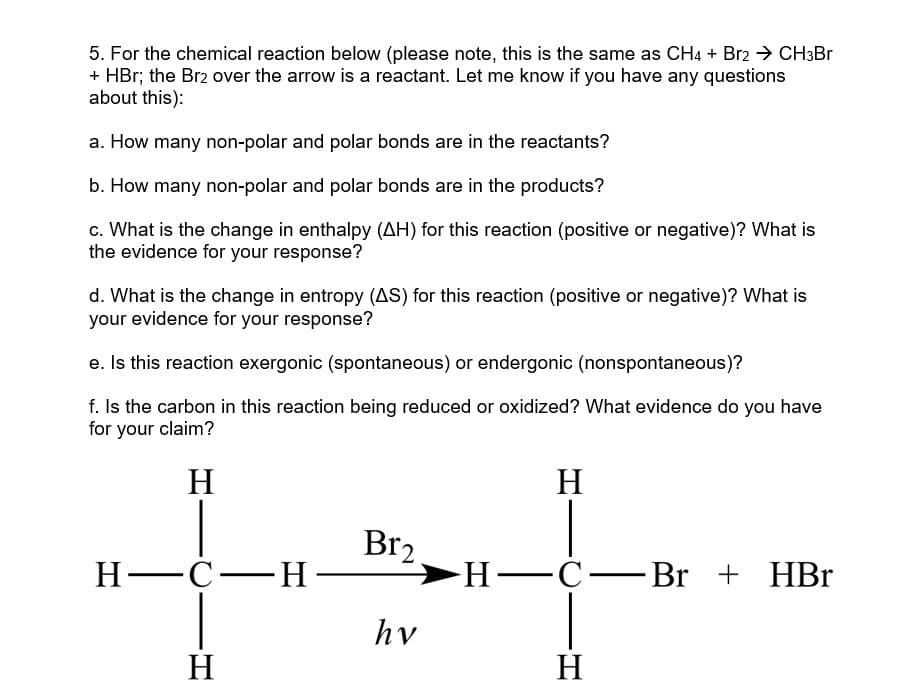5. For the chemical reaction below (please note, this is the same as CH4 + Br2 → CH3Br + HBr; the Br2 over the arrow is a reactant. Let me know if you have any questions about this): a. How many non-polar and polar bonds are in the reactants? b. How many non-polar and polar bonds are in the products? c. What is the change in enthalpy (AH) for this reaction (positive or negative)? What is the evidence for your response? d. What is the change in entropy (AS) for this reaction (positive or negative)? What is your evidence for your response? e. Is this reaction exergonic (spontaneous) or endergonic (nonspontaneous)? f. Is the carbon in this reaction being reduced or oxidized? What evidence do you have for your claim?
Thermochemistry
Thermochemistry can be considered as a branch of thermodynamics that deals with the connections between warmth, work, and various types of energy, formed because of different synthetic and actual cycles. Thermochemistry describes the energy changes that occur as a result of reactions or chemical changes in a substance.
Exergonic Reaction
The term exergonic is derived from the Greek word in which ‘ergon’ means work and exergonic means ‘work outside’. Exergonic reactions releases work energy. Exergonic reactions are different from exothermic reactions, the one that releases only heat energy during the course of the reaction. So, exothermic reaction is one type of exergonic reaction. Exergonic reaction releases work energy in different forms like heat, light or sound. For example, a glow stick releases light making that an exergonic reaction and not an exothermic reaction since no heat is released. Even endothermic reactions at very high temperature are exergonic.
note-about the Br-Br bond should have a total of 5 bonds on the reactant side. For C, look at the number of polar/nonpolar bonds to decide enthalpy. For D, use the total number of molecules on each side.
do a,c,d

Step by step
Solved in 2 steps with 1 images









